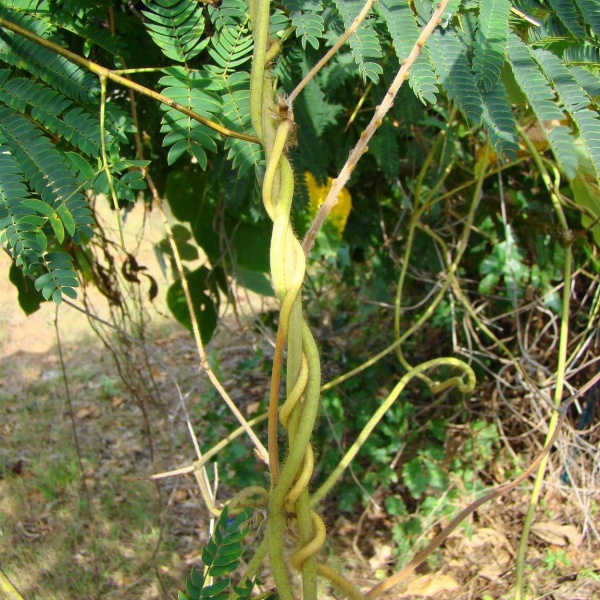Kudzu (Pueraria montana), a member of the pea family (Fabaceae), is one of the world's most invasive plants. It grows rapidly and forms dense, ropey mats over other vegetation and structures. The plants produce massive tuberous roots, making them difficult to control or eradicate.
Kudzu reduces biodiversity, transforms ecosystem structure and function, and causes significant productivity losses to the forestry industry. It also serves as a carrier of soybean rust, a serious fungal disease of soybeans.
Where it's found
The only population of kudzu known to subsist in Canada was discovered in southern Ontario in 2009 and is under official control with the goal of eradication. Native to eastern Asia, it has been intentionally introduced to many countries for ornamental, medicinal, culinary, forage and erosion control purposes. There are severe infestations of kudzu in the southeastern United States. Kudzu grows in numerous habitats, including abandoned fields, grasslands, pastures, plantations, forests, roadsides, riverbanks and urban areas.
How to spot it
Kudzu is a perennial, climbing vine with stems that can grow 10-30 m in length. Young vines are covered with bronze-coloured hairs. Leaves are composed of three leaflets. Kudzu flowers are clustered, fragrant, reddish-purple and similar in appearance to the flowers of pea plants. The seed pods are flattened, hairy and contain 3-10 kidney-shaped seeds.
How it spreads
Intentional planting of kudzu has been the most significant factor in its spread. Once established in an area, its rapid vegetative growth allows it to spread locally. Vines that come into contact with the soil can root at nodes and form independent plants. Seeds are also produced but in low numbers and are not a major factor in its spread. Movement of contaminated soil, garden waste or equipment can result in new introductions.
What you can do
- Avoid planting or distributing invasive plants
- Leave natural items in their natural habitats
- Ensure machinery, vehicles and tools are free of soil and plant parts before moving them from one area to another
- Use clean, high-quality seed that is certified if possible
- If you think you've spotted kudzu or see it for sale in Canada, report it to the Canadian Food Inspection Agency (CFIA). The CFIA will follow up and determine if further action is needed.
What we are doing
Kudzu is regulated as a pest in Canada under the Plant Protection Act. It is also listed as a prohibited noxious weed in the Weed Seeds Order, 2016 under the Seeds Act. Importation and domestic movement of regulated plants and their propagative parts is prohibited.
- RMD-10-11: Pest risk management decision for the regulation of Kudzu
- D-12-01: Phytosanitary Requirements to Prevent the Introduction of Plants Regulated as Pests in Canada








